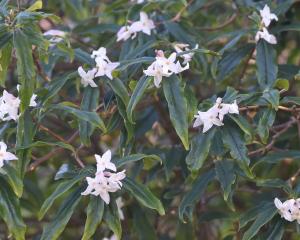
There are lots of stock phrases used in the world of gardening which, despite their ubiquity, can be a source of confusion and frustration for newbies. Perhaps nowhere is this more the case than the "bright, but indirect" light advice that seems to pass for pretty much every houseplant in existence. What does this seemingly noncommittal phrase mean in practice? And are there any plants that don’t match this advice? Well, here we go ...
The first thing you need to know is that our eyes are pretty poor at measuring light levels. To demonstrate this just download one of the free light meter apps on your phone. You will notice that when you hold your camera up to the glass of a window the levels can be almost double that of when you step just a metre away. Step another metre into the room and levels can halve again, despite the brightness level seeming visually very similar to our eyes.
Roughly speaking, within 1m of a window is classed as bright, direct light. This will depend on a number of other factors, such as the direction your window faces (in the southern hemisphere, north is the brightest, south is the shadiest), the size of the window, the time of year and light-blocking obstacles that lie outside the window. Objects here will usually leave really crisp, dark shadows and it will be uncomfortable to sit and read in this spot at the height of summer. As most houseplants have specifically been selected from rainforest floors to have the in-built ability to survive in comparatively dingy living-room conditions, relatively few of them will love this spot. Cacti and succulents, however, are good tenants here, as are a handful of species from Mediterranean-type climates such as bougainvillea and pelargoniums.
Within 1m-2m of the window is usually the sweet spot, which we call bright, indirect light. This is particularly the case for north-facing windows all year round, and east-and west-facing windows, apart from at the height of summer. The light levels here are ideal for the vast majority of species that have been selected for the houseplant trade, but without the risk of being so high as to burn their delicate leaves. Everything, from moth orchids and Swiss cheese plants to ferns and African violets, will love it here.
Conveniently, it’s also the ideal level we like as humans. You’d be perfectly comfortable sitting here reading without squinting, and shadows around objects will be so diffuse and blurry as to be virtually invisible. As levels dip in the darker months, the ledges of north-facing windows that are normally far too bright for many plants in the summer, are usually just right in the winter, so don’t feel you can’t move things around to not only give your plants ideal conditions for growth, but also give your interior a fresh look over the seasons.
Finally, beyond 2m from any window, especially south-facing ones, will be classed as low, indirect-light levels. Far fewer species will be happy here, but good examples are aspidistras and zamioculcas. It’s as simple as that.
— Guardian News and Media












